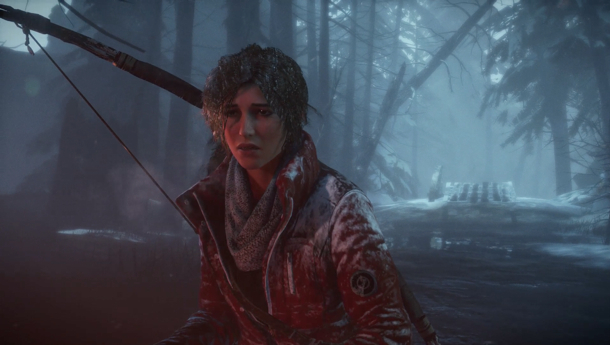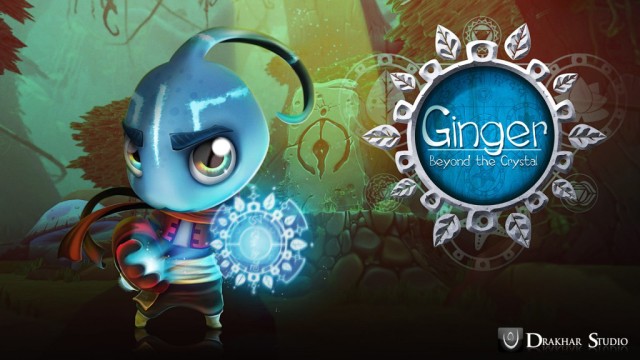Some stories lend themselves well to the episodic format, stories with high drama or emotion, stories that are easily offered in chapters, stories that require, or at least hope for, a little reflection after a segment is completed. Me, I’ve never much associated the Resident Evil franchise with development of story, character, or reflection, though I know plenty of folks who love them, so I thought: why not dive in and see how this bite-sized nugget of Resident Evil compares to past experiences, and see how it fits in with the wave of episodic games.
It seems prudent here to drop some disclaimers: I don’t much like Resident Evil games. I’ve always found them entertaining, but more trouble than they’re worth. I’m not a huge survival horror fan, either; I’m prone to flipping out at jump scares, which is not great for things like maintaining aim (or ammo). I’d rather watch my horror than interact with it. I played some of the early games, though I’m not sure I ever completed one, and I played about half of Resident Evil 4, but never touched 5, the games bookending the Revelations storylines.
Perfect person to review the game, right? Well, why not. And to make things more interesting (at least for me), since the game includes local co-op, I played with my husband, who is also not a big Resident Evil fan. We streamed, too; you can see the full series here on the NYMGamer YouTube channel, though I’ve included some highlights at the end of this post.
Revelations 2 opens, after a very cheesy ad for TerraSave, at a party. Main character Claire Redfield hooks up with new recruit Moira Burton, and, after a bit of exposition, things start going down; the party is attacked, our heroines are abducted, and they wake in dank cells to find they’ve been outfitted with mysterious bracelets controlled by remote. If you guessed the place might also include a few mutated enemies, well, you’ve probably played a few games before. Objective, as we were reminded by the pause screen? Escape the facility. Noted. Not like we were looking to make summer homes here.
As Claire and Moira investigate, some doors open thanks to an assist from the bracelets, but gameplay is largely concerned with moving back and forth through a series of rooms in search of keys and navigable paths. A large puzzle dominates the latter half of the episode, in which sinister blade-machines like something out of a horror version of a Star Trek engine room lay dormant, waiting for players to turn on the power switches they’re so desperately hunting. You know the grinders are coming, and that they’re not gonna help you, but it can’t be avoided. Nor can mutant creatures and lockpicking minigames.
While I have not yet played the game in single-player mode, in co-op mode, Claire and Moira have to work pretty closely together here, with Moira using her flashlight to highlight objects in the darkness, while Claire serves as primary protector. Moira can use her flashlight to aid in combat, and later picks up a crowbar, and together the two women navigate the facility, searching out ammo, enemies, and a few scattered Kafka quotes along the way.
I was a little wary going in, because I remember Resident Evil games being an exercise in conservation: save your bullets, save your skin, save your energy, because you might be there for a while, but here, none of that seemed to apply. I’m not sure if the titles have changed over the years, or if it’s the episodic format at play here, but I never ran low on ammo (possibly because I really just want to stab, stab, stab), and only once did I find myself healthless, but once we figured out I was invincible while handling fire – a superpower if ever there was one – it didn’t matter. The only real challenge encountered in any of the fights was struggling with my own tendency to back up and avoid while reloading or regaining bearings, and in the case of the big ending battle, that meant backing into a friggin’ meat grinder.
 I’m not saying our playthrough was seamless — watch those videos for some moments of hilarious ineptitude — but it was never particularly difficult. The game felt like a very small grid; we went in circles through the same handful of rooms until we found all the necessary keys and parts, fought a few big guys, burned stuff down, and broke out into the episode’s final moments in the open air. The game does come with a Raid Mode minigame, and while that’s outside the scope of the Power Hour review approach, I’ll reveal that I didn’t find it so exciting (Of course, I didn’t dance my way through it. Maybe next time.). In the end, I found this a very forgettable experience. Sure, we played co-op, which make things easier, but we still powered through quickly and with no real difficulties. There doesn’t seem to be much to explore here, and I find the characterization bland at best – the angry daughter, the seasoned agent, the insane kidnapper putting victims through a test. I will say the gunplay was relatively smooth – any wildness in the videos is purely player fault, not game fault, but the fact that combat works pretty well in Resident Evil has always made me wonder why nothing else seems to. I’ve long spoken out about games that shoehorn difficulty into puzzles and obstacles by means of requiring players find the sweet spot, the little square that will cue the action button to pop up, and boy is that ever in full effect here with the flashlight/hidden item gimmick. By episode’s end, I’m wondering how long this would have taken if not for the lockpicking and shuffling around just to get past basic mechanics. Forty minutes? I’d pay six bucks for a real revelation that weighed in at forty minutes, but for me? This wasn’t it. I doubt I’ll be buying further episodes. Your mileage may vary. But the episodic approach may work for Capcom, as it might draw in people like me, who figure they’ll give almost anything a try for a few dollars.
I’m not saying our playthrough was seamless — watch those videos for some moments of hilarious ineptitude — but it was never particularly difficult. The game felt like a very small grid; we went in circles through the same handful of rooms until we found all the necessary keys and parts, fought a few big guys, burned stuff down, and broke out into the episode’s final moments in the open air. The game does come with a Raid Mode minigame, and while that’s outside the scope of the Power Hour review approach, I’ll reveal that I didn’t find it so exciting (Of course, I didn’t dance my way through it. Maybe next time.). In the end, I found this a very forgettable experience. Sure, we played co-op, which make things easier, but we still powered through quickly and with no real difficulties. There doesn’t seem to be much to explore here, and I find the characterization bland at best – the angry daughter, the seasoned agent, the insane kidnapper putting victims through a test. I will say the gunplay was relatively smooth – any wildness in the videos is purely player fault, not game fault, but the fact that combat works pretty well in Resident Evil has always made me wonder why nothing else seems to. I’ve long spoken out about games that shoehorn difficulty into puzzles and obstacles by means of requiring players find the sweet spot, the little square that will cue the action button to pop up, and boy is that ever in full effect here with the flashlight/hidden item gimmick. By episode’s end, I’m wondering how long this would have taken if not for the lockpicking and shuffling around just to get past basic mechanics. Forty minutes? I’d pay six bucks for a real revelation that weighed in at forty minutes, but for me? This wasn’t it. I doubt I’ll be buying further episodes. Your mileage may vary. But the episodic approach may work for Capcom, as it might draw in people like me, who figure they’ll give almost anything a try for a few dollars.
Highlights: There are a few funny bits of dialogue. Solid gunplay. Some interesting combat mechanics I might explore further if I went back to the game.
Low points: I hate moving around in general in Resident Evil games; it feels artificial and strange. Lots of needless obstacles. Repetition, which is an achievement in itself in an hour.
But why trust my words when you can see my actions? Check out some of the early moments (include my fiddling with the menus, because I play backwards), and some later fights with bigger enemies (and lots of moments in which I’ve forgotten to reload). I’d embed the videos, but autoplay is a pox on our society and I won’t subject you to it. If you watch, however, I will subject you to my Southern accent and foul mouth. Consider yourself warned.




